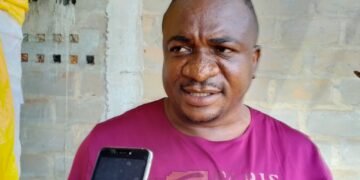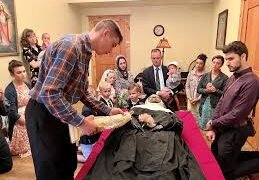By Charles Igwe
In a profound gesture of remembrance and reconciliation, Catholic bishops from the United States, Japan, and South Korea will converge this August in Hiroshima and Nagasaki — the two cities devastated by atomic bombs in 1945 — for a five-day intercontinental pilgrimage of peace. The journey marks the 80th anniversary of the bombings and aims to rekindle global consciousness on the moral urgency of nuclear disarmament.
Prominent Church leaders including Cardinal Blase Cupich (Chicago), Cardinal Robert McElroy (San Diego), Archbishop Paul Etienne (Seattle), and Archbishop John C. Wester (Santa Fe) will join forces under the coordination of the Partnership for a World Without Nuclear Weapons (PWNW). The pilgrimage is also framed within the Catholic Church’s ongoing Jubilee Year, themed “Pilgrims of Hope.”
Scheduled to begin on August 5 at the World Peace Memorial Cathedral in Hiroshima, the pilgrimage will feature a landmark panel discussion involving the bishops and hibakusha—survivors of the bombings—alongside Catholic leaders from Asia and America. Events will include liturgies, interfaith and ecumenical dialogues, academic discussions, and visits to historical landmarks and peace museums.
Archbishop Wester, a vocal advocate for nuclear disarmament, reflected on the spiritual and historical weight of the moment: “We are pilgrims of peace and hope, crossing continents and histories to remember the past and transform the future. This journey is not only a remembrance but a recommitment to the Gospel call for nonviolence and the abolition of nuclear weapons.”
The pilgrimage is the result of collaboration between the Archdioceses of Santa Fe, Seattle, Chicago, and Washington, as well as with Japanese bishops — notably Archbishop Peter Michiaki Nakamura of Nagasaki and Bishop Alexis Mitsuru Shirahama of Hiroshima.
Academic institutions are also playing a key role. Participating universities include Georgetown, Loyola Chicago, and the University of Notre Dame, alongside Jesuit institutions in North America and Japan such as Sophia University and Nagasaki Junshin Catholic University. Delegations of staff and students will accompany the bishops, emphasizing the educational and generational dimension of the peace mission.
The pilgrimage will close in Nagasaki on August 10 with an academic symposium and ecumenical prayer service at the Urakami Cathedral — itself a symbol of faith and resilience, having stood near the epicenter of the 1945 atomic blast. As the world stands on edge in an era shadowed by war and global insecurity, this pilgrimage sends a clear signal: the Church’s voice for peace must never be silent.

















































